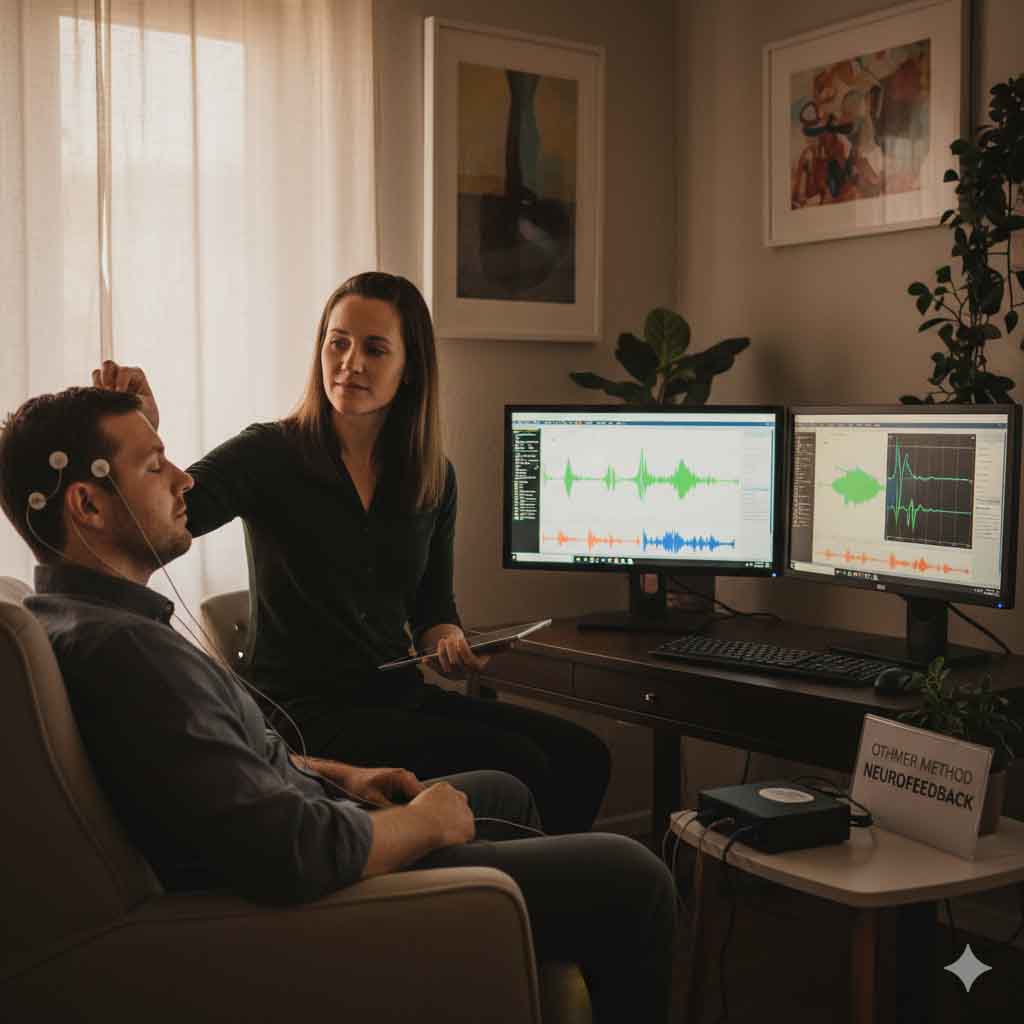Clinical Approaches
IN ARVADA, CO
EMDR is a structured therapy to reprocess disturbing and painful memories, often for PTSD.
-
BLS uses side-to-side eye movements, tones, or taps.
- This stimulation is thought to facilitate memory processing in the brain
-
Proven to reduce distress related to a traumatic memory.
-
EMDR uses an eight-phase approach.
-
The goal is to move to an adaptive resolution.
-
A therapist guides the whole process.
-
EMDR is empirically validated for trauma and PTSD.
Interpersonal Neurobiology (IPNB) examines how the mind, brain, and relationships interact to shape human development, well-being, and therapeutic change.
-
-
Multidisciplinary: Unifies neuroscience, psychology, and systems theory.
-
Mind: Embodied and relational flow of energy/information.
-
Integration: Linking differentiated parts is core to health.
-
Goal: Promote neural and relational integration.
-
Mindsight: Seeing the mind of self and others.
-
Therapy: Relationships promote change through integration.
-
Acceptance and Commitment Therapy (ACT) is a type of cognitive-behavioral therapy (CBT) that focuses on increasing psychological flexibility.
-
Acceptance: Openly embrace unwanted private experiences.
-
Commitment: Take action toward chosen values.
-
Values: Choose what deeply matters to you.
-
Defusion: Separate from unhelpful thoughts and feelings.
-
Present Moment: Stay engaged with current experience.
-
Self-as-Context: Pure awareness, distinct from content.
-
Goal: Increase psychological flexibility for living fully.
Dialectical Behavior Therapy (DBT) teaches skills to manage intense, unstable emotions and destructive behaviors.
-
Dialectical: Balances both acceptance and change strategies.
-
Focus attention non-judgmentally on the present moment.
-
Distress Tolerance: Cope with crisis without making it worse.
-
Identify, understand, and manage strong feelings.
-
Interpersonal Effectiveness: Maintain relationships and assert needs respectfully.
-
Goal: Build a “life worth living” with skill.
-
Format: Combines individual therapy and skills groups.
CBT is a goal-oriented, short-term therapy focused on the idea that thoughts, feelings, and behaviors are interconnected and can be changed to alleviate distress.
-
Cognitive Restructuring: Identify and challenge unhelpful thought patterns.
-
Behavioral Experiments: Test beliefs by trying new actions.
-
Core Beliefs: Deep, fundamental views about self/world.
-
Skills-Based: Teaches specific, practical coping skills.
-
Present-Focused: Targets current problems and symptoms.
-
Goal: Change maladaptive thinking and behaviors.
- Neurofeedback is a non-invasive, structured form of biofeedback that uses operant conditioning to train the brain to produce more regulated and efficient brainwave patterns.
-
Biofeedback: Self-regulation training using body signals.
Conditioning by rewarding desired brainwave frequencies.
Family Systems Theory views the family as a single emotional unit and a complex, interconnected system where the behavior of one member affects all others.
-
System: Family is an interconnected emotional unit.
-
Boundaries: Rules defining contact within and outside system.
-
The system’s natural tendency to maintain balance.
-
Triangles: A three-person relationship to reduce dyad tension.
-
Differentiation: Maintaining self while emotionally connected.
-
Fusion: Emotional blurring between family members.
-
Goal: Increase individual differentiation and system flexibility.

Person -Centered
Person-Centered Therapy is a humanistic, non-directive approach where a supportive and accepting therapist nurtures the client’s inherent capacity for growth.
-
Client-Centered: The client directs the pace and focus.
-
Actualizing Tendency: Innate drive toward self-fulfillment.
-
Congruence: Therapist is genuine and transparent (real).
-
Unconditional Positive Regard (UPR): Full, non-judgmental acceptance.
-
Empathy: Deeply understanding the client’s experience.
-
Therapeutic Alliance: Relationship is the primary agent of change.
-
Goal: Facilitate the client’s self-discovery and growth.








